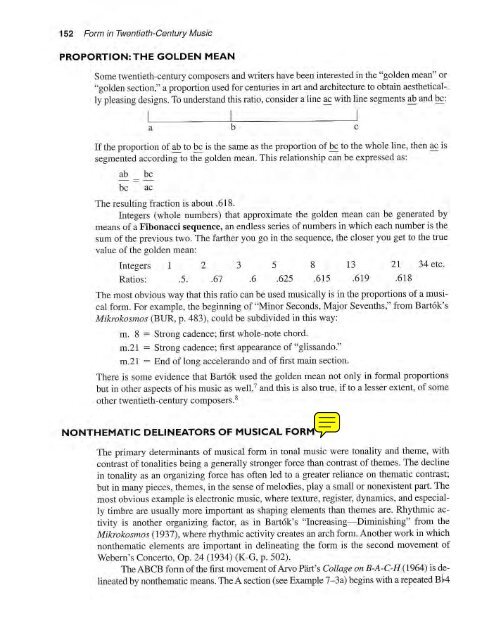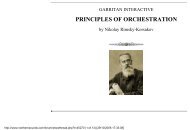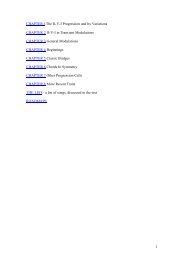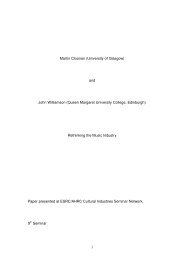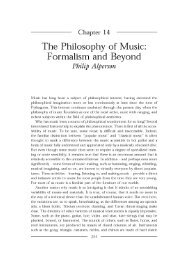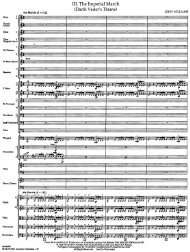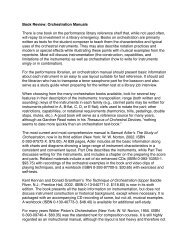TWENTIETH- - Synapse Music
TWENTIETH- - Synapse Music
TWENTIETH- - Synapse Music
Create successful ePaper yourself
Turn your PDF publications into a flip-book with our unique Google optimized e-Paper software.
152 Form in Twentieth-Century <strong>Music</strong><br />
PROPORTION:THE GOLDEN MEAN<br />
Some twentieth-century composers and writers have been interested in the "golden mean" or<br />
"golden section," a proportion used for centuries in art and architecture to obtain aesthetically<br />
pleasing designs. To understand this ratio, consider a line ac with line segments ab and be:<br />
a b c<br />
If the proportion of ab to be is the same as the proportion of be to the whole line, then ac is<br />
segmented according to the golden mean. This relationship can be expressed as:<br />
ab bc<br />
bc ac<br />
The resulting fraction is about .618.<br />
Integers (whole numbers) that approximate the golden mean can be generated by<br />
means of a Fibonacci sequence, an endless series of numbers in which each number is the<br />
sum of the previous two. The farther you go in the sequence, the closer you get to the true<br />
value of the golden mean:<br />
Inlegers<br />
Ratios:<br />
2 3<br />
.5. .67 .6<br />
5<br />
.625<br />
8<br />
.615<br />
13<br />
.619<br />
2 1 34 etc.<br />
The most obvious way that this ratio can be used musically is in the proportions of a musical<br />
form. For example, the beginning of "Minor Seconds, Major Sevenths," from Bart6k's<br />
Mikrokosmos (BUR, p. 483), could be subdivided in this way:<br />
m. 8 = Strong cadence; first whole-note chord.<br />
m. 21 = Strong cadence; first appearance of "glissando."<br />
m.2 l = End of long accelerando and of first main section.<br />
There is some evidence that Bartok used the golden mean not onl y in formal proportions<br />
but in other aspects of his music as well ,7 and this is also true, if to a lesser extent, of some<br />
other twentieth-century composers.8<br />
NONTHEMATIC DELINEATORS OF MUSICAL FORM<br />
The primary determinants of musical foml in tonal music were tonality and theme, with<br />
contrast of tonalities being a generally stronger force than contrast of themes. The decline<br />
in tonality as an organizing force has often led to a greater reliance on thematic contrast;<br />
but in many pieces, themes, in the sense of melodies, playa small or nonex istent part. The<br />
M<br />
most obvious example is electronic music, where texture, register, dynamics, and especial<br />
Iy timbre are usually more important as shaping elements than themes are. Rhythmic activity<br />
is another organizing factor, as in Bart6k's "Increasing-Diminishing" from the<br />
Mikrokosmos ( 1937), where rhythmic activity creates an arch form. Another work in which<br />
nonthematic elements are important in delineating the form is the second movement of<br />
Webern's Concerto, Op. 24 (1934) (K-G, p. 502).<br />
The ABCB form of the first movement of Alvo Part's Collage on B-A -C-H (1964) is delineated<br />
by nonthematie means. The A section (see Example 7-3a) begins with a repealed Bb4<br />
.618


